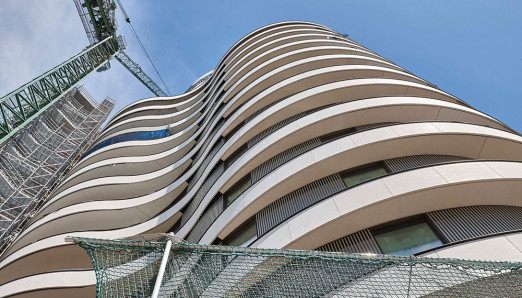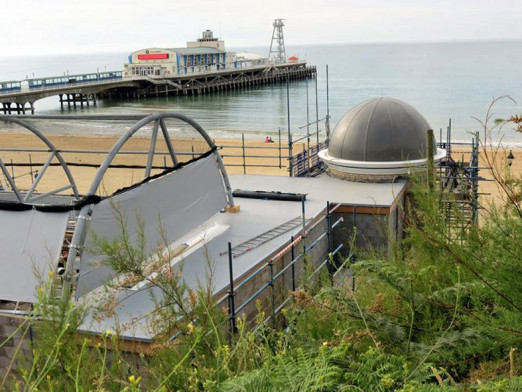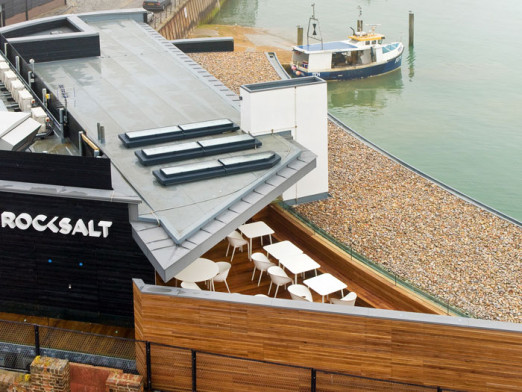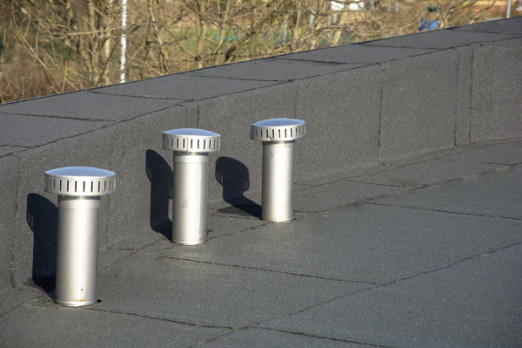Architectural Author and Editor Ruth Slavid who chaired our #PerfectRoof seminar on flat roof design in November writes about the day.
How do you ensure that your flat roof doesn’t leak? The audience at the latest SIG roofing seminar probably expected to receive a lot of technical advice, and they weren’t disappointed. What they didn’t expect was to hear about the disgruntled workman who went on site on a Saturday and attacked less-visible parts of the roof with a Stanley knife. No roofing membrane, however tough, could withstand that!
This was revealed in the presentation by Stephen Clamp, a consultant building surveyor with TGA Building Consultancy. He was setting the scene by explaining what can go wrong. Although there are now excellent materials available, there are still lots of problem roofs, which Clamp attributed to people rather than products.
The current organisation of projects means, he said, that ‘everybody is a subcontractor’, from the architect to the materials manufacturer, and it can be hard to work out who is taking responsibility. The design of a roof may be too complex, with too many penetrations, posing at the very least a challenge to the installation team. And, he said, ‘workmen are damaging roofs’ during installation, after installation and during maintenance. Few are as deliberately destructive as the menace with the Stanley knife, but all demand improvement ranging from training to imposition of good practice.
When practice is good, however, it can be outstanding. Stephen Ashton, engineering director of transportation at Atkins, gave a fascinating insight into one of the most complex projects, the roof of the new Birmingham New Street railway station. This enormous terminus, which dwarfs London’s Euston, had to interface with a number of existing buildings. Some of the roof forms were of an exuberant geometry, and the solution turned out to be to use seven different waterproofing materials. Working with SIG Design & Technology materials was ideal because the company is ‘product neutral’ – it supplies a range of materials and so can advise dispassionately on which is the most suitable.
Dave Maginnis, managing director of roofing contractor Briggs Amasco, ran through some of the technical challenges and the choice of materials. ‘Where you get problems it is often because the wrong material has been used,’ he says. Every detail on this roof was thought out with great care.
One problem that Briggs did not have to cope with at Birmingham was the smell of the material that was used. This was an issue for developer Barratt at their 70 Horseferry Road scheme in London. The high-end apartment blocks were already nearing completion, and some were occupied, when a problem was discovered with a detail of the balconies, and some remedial work was needed. This included resurfacing the balconies with a new waterproof layer, with access coming through the apartments. The most suitable product was going to be a liquid membrane and, unusually, the developer was forced to ask itself ‘how does it smell’? Some waterproofing solutions, although fit for purpose in every other way, had an odour that residents disliked penetrating their living spaces.
The solution, said Barratt Technical Director Phil Hayden, was Hydrostop AH-25, a product that fulfils all the technical requirements, as well as being odourless. The material was demonstrated during the coffee break, which led to the unusual sight of construction professionals sniffing pots of liquid waterproofing.
SIG also took the opportunity during the break to hand out copies of a checklist that it has produced, guiding architects through the initial thinking they should use when specifying a flat roof. Rather than take the place of specialist advice, this is intended to give them at least an idea of what they need and of what questions to ask.
Ross Finnie, sales director at SIG Design and Technology, took the audience through the 14 questions that they should address, divided into employer’s requirements, design and buildability factors. He took the opportunity to show some of the things that can go wrong when the design team does not make the correct decisions, with photos of flooded roofs and bad detailing – just how do you waterproof under the threshold, once the door has been installed?
Mike Crook, trading director of SIG Design & Technology, and a former president of the Single Ply Roofing Association, explained how SPRA is trying to raise standards and ensure quality. And finally, Mark Jackson of Building and Land Guarantees, guided delegates through the minefield of insurance-backed guarantees. He subtitled his talk ‘Confused? You will be!’ and then set out to clarify this tricky area. Delegates learnt a lot, with one overriding conclusion – seek advice from an expert.
This could summarise the whole seminar. There is a lot to understand in roofing and a lot of pitfalls to avoid. There is also plenty of knowledge available. Nobody who is not a roofing expert can expect to know it all. For architects and other specifiers the essential is to know enough to ask the right questions, to seek the best advice and, it is to be hoped, avoid the worst pitfalls.
This article originally appeared in the RIBA Journal.









